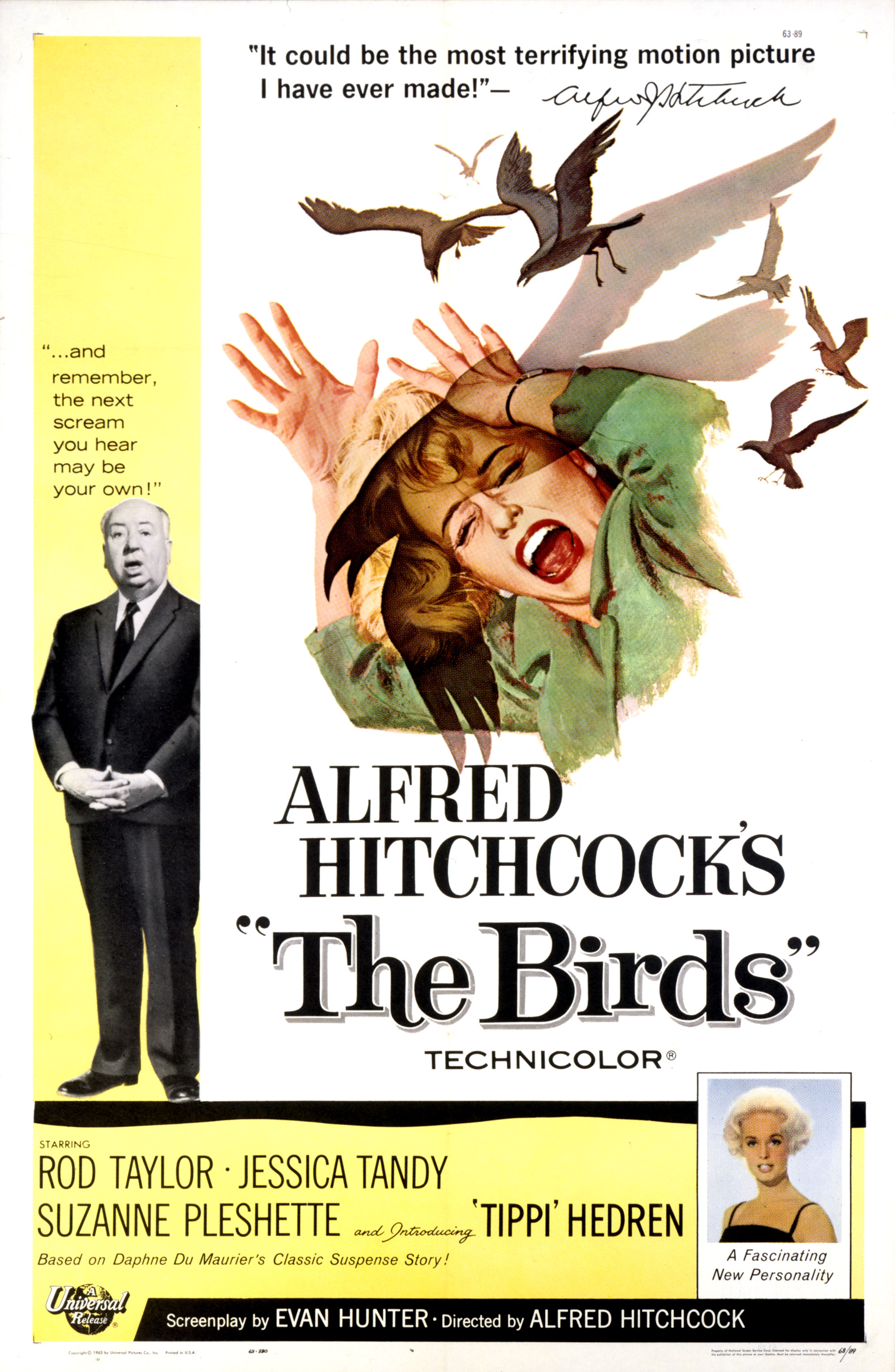| Psycho (1960 |
I began my love affair with horror films in the early 1990's. I won't spoil what it was quite yet, but I saw my first horror film on USA Network in 1992 and I've been a avid lover ever since. Throughout the years I had been told that since I enjoyed horror films, I'd be doing myself a favor by checking out Alfred Hitchcock's Psycho. I meant to view the film much sooner than what I did, but it wasn't until I was a sophomore in college that I saw the film. Viewing it in Professor Jamie Durham's "Film Aesthetics" class, I immediately saw why so many fans and critics alike regard it as one of the greatest horror films ever made. Alfred Hitchcock realized two vitally important things in making a good horror film. First, the importance of interesting compelling, characters, in an interesting compelling story. Audiences will invest themselves, their thoughts and their feelings if you give them reason to. Second, the proper usage of suspense. Thinking of what could or is going to happen, is often more terrifying than when it actually happens. Hitchcock knew this and he demonstrated it impeccably throughout the film. Although I don't know, I question whether it was the first time (or one of the first times) in a film where the killer wasn't a monster or an obviously evil person. The character of Norman Bates is quite likable and although it certainly wouldn't be today, 55 years ago it did come as a shock when it was revealed that he was the killer. Anthony Perkins played him magnificently and of course Janet Leigh was stellar as well. It also had a small part for University of Iowa graduate and one of my favorite television actors John Anderson as the used car salesman.
 |
| The Birds (1963) |
Another thing that the mastermind of horror understood was the power of simplicity. I've been guilty of this myself a time or two, so I can't be too judgmental but wanting to be impressive many writers/film makers go all out with complicated, convoluted stories that require so much thought and detail they often lose their audience. Hitchcock understood that you didn't have to do this. You could take a very simple concept like birds going mad and attacking people to death and allow the imagination of your audience to fill in the gaps. 1963 didn't have the technological advancements that we enjoy today in 2015, thus some of the action scenes aren't as exciting a they would be today but I don't know if that's necessarily a bad thing. I think sometimes films put too much into special effects and thus the story and the characterization of film suffers. I personally would rather have a very good, yet simple story like The Birds, even if it does lack special effects.
| Night of the Living Dead (1968) |
| Rosemary's Baby (1968) |
A librarian believe it or not, recommended this to me about 9 and a 1/2 years ago. I had expressed my interest in horror to her, when she went over to the movie section of the library and asked me if I had ever seen Rosemary's Baby. I told her that I had not and she insisted that it was a must see for any horror fan. During that time in my life, I was slowly making the transition from a Christian to an agnostic, and found myself vastly intrigued by anything that dealt with religion. Seeing this film, and having my own thoughts and fears about what takes place in the film, I got online and examined others thoughts and feelings. Going back all these years later and reexamining those thoughts and feelings it amazes me how much differently I feel today than I did then. How the thoughts and feelings of others whom I once resonated with then, seem so foreign to me today. How the foreign thoughts and feelings of others then, seem so familiar today. I don't completely dismiss the feelings I had then. I still entertain them, but I don't think of them as "factual" as I did then and I certainly don't think of them as the only possibility. I'm not a woman, so obviously I can't imagine what it would be like to be impregnated by Satan, but the thoughts of being used as a catalyst of some sorts to bring evil to the world of any kind is quite frightening. Perhaps this is unfair for me to say, but I think the thought is much for terrifying to someone who outright believes in the Devil than it is to someone who doesn't. I know as an agnostic, who entertains the idea of the Devil being real, it scares me but back when I "knew" the devil "was real" it really scared me. A lot of times a film is simply a piece of entertainment that you watch, and either you enjoy or you don't. Other times it is a work of art that not only makes you examine it, but also examine yourself and what you believe. Rosemary's Baby had no more significance in the transition of me going from Christian to Agnostic (or as I would rather call myself Possiblist) than did any of the other 10,000 pieces of that puzzle. Yet, it begs the question. Is a puzzle 9,999/10,000 pieces put together fully complete?
No comments:
Post a Comment